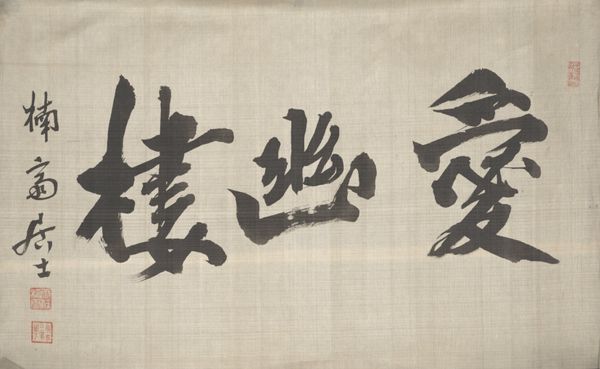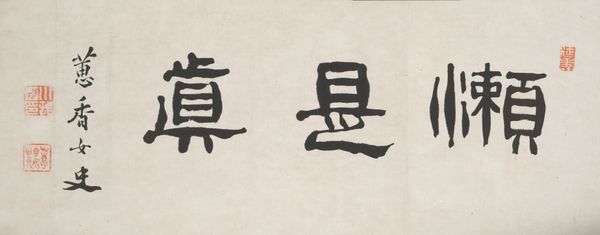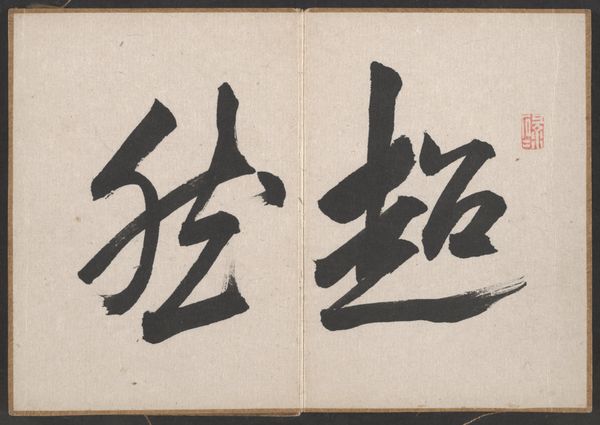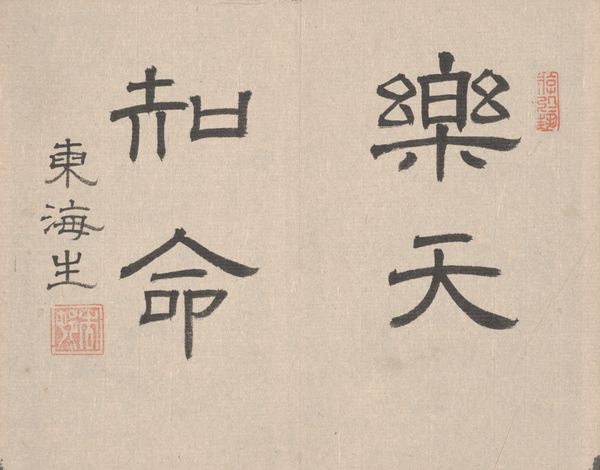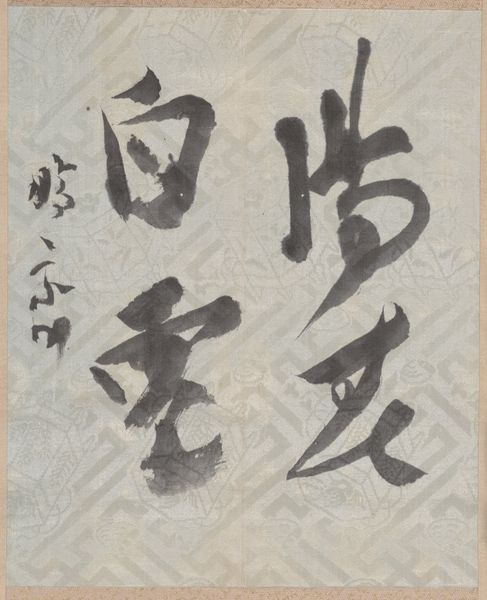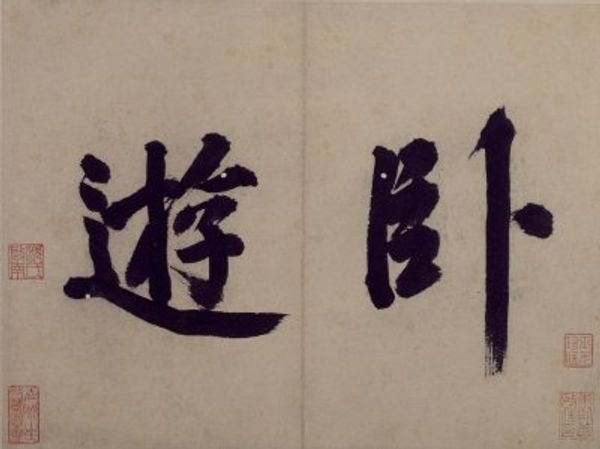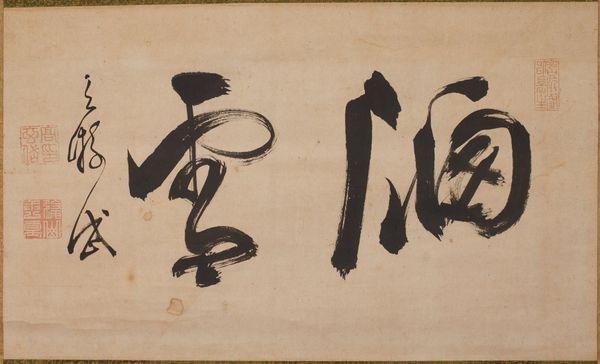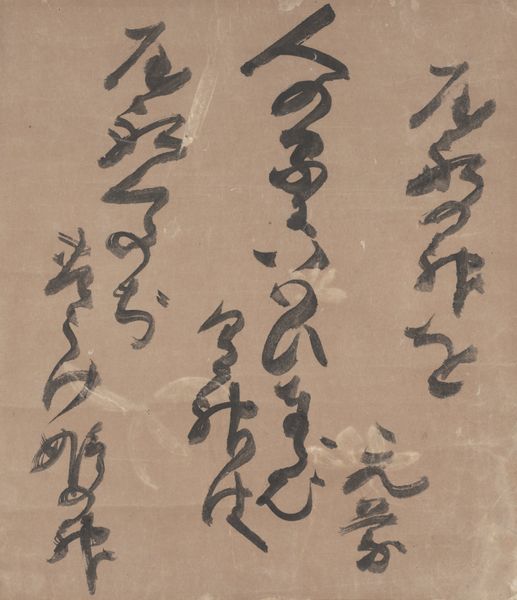
drawing, paper, ink-on-paper, ink
#
drawing
#
asian-art
#
typography
#
paper
#
ink-on-paper
#
ink
#
calligraphy
Dimensions: 11 3/8 × 21 1/8 in. (28.89 × 53.66 cm)
Copyright: Public Domain
Editor: This artwork, entitled "-Seemingly Clumsy- Studio", is an ink-on-paper drawing from around the 18th century, created by Sawada Tōkō. I'm really drawn to the starkness of the ink against the aged paper. It feels both ancient and immediate. What strikes you about it? Curator: Looking at this calligraphy, I see a fascinating tension between individual expression and established societal norms. How did institutions shape calligraphic style and consumption at the time? The large characters certainly demand attention, indicating a public, perhaps even performative, function for this piece. What sociopolitical statements might it convey? Editor: A public function… interesting! I was only thinking of it as a personal expression. Are you suggesting that its size indicates an intent to impress a wider audience beyond the artist themselves? Curator: Precisely! Think about the cultural importance of calligraphy in 18th-century Japan. Who was granted access to this form of art, and whose voices were amplified through it? Calligraphy was a skill closely associated with the literati and political elites. Editor: So, mastering it was a form of cultural capital? Did displaying such a piece reinforce existing power structures? Curator: Exactly! By showcasing skilled calligraphy, one could assert their belonging to, or even their ascent within, those power structures. Consider the role of patronage in supporting such artistic endeavors, too. Editor: I see. This piece isn't just aesthetically pleasing but also a kind of statement within a larger cultural context. Curator: It certainly is! Analyzing this work from a historical perspective reveals much about the social and political role of art in 18th century Japan. Now, how does understanding the social context influence our appreciation of it? Editor: It makes it so much richer, I see now that it’s not just about aesthetic choices. Curator: Indeed, by exploring how art interacts with the world, we appreciate both in new light.
Comments
No comments
Be the first to comment and join the conversation on the ultimate creative platform.
